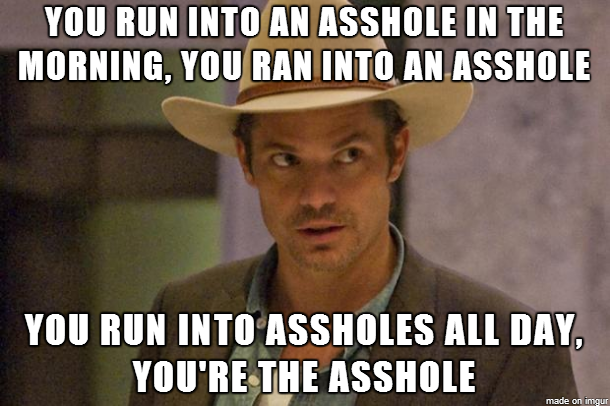Imagine that you need a new website and you have a budget of $20,000. You find a freelancer that seems to be able to do the job.
Well, they quote you $30,000.
OK, it’s more than you budgeted, but this is an investment!
You find the money and hire them. It’s supposed to take 8 weeks.
10 weeks later, you’ve seen some progress, but not much. You’re fed up and the freelancer has been a nightmare to work with, so you finally pull the plug. You already paid them $15,000 and you have their work that they’ve done so far, but now they’ve disappeared.
Suing them probably isn’t worth it.
But you still need a website, so you go looking for a new freelancer. You’re a lot pickier and more thorough with your hiring process.
You find someone.
This new freelancer seems a lot more professional, but then they hit you with the bad news:
the previous work is worthless and needs to be scrapped, and the true cost of what you need is more like $50,000.
So now, assuming everything goes well, you’re in for $65,000, more than triple what you had originally budgeted.
Think about how terrible this would feel to be the client in this situation.
This post is about what you should do as the second freelancer in the scenario above. How do you handle a potential client with a “rescue project” like this?
Answer:
Very carefully!
These projects are usually (but not always) nightmares to take over. Not because of the work that the previous person did (in my experience, it’s probably not great but usually doesn’t need to be completely tossed), but because of the place the client will usually be in psychologically.
At this point, this project is probably over-budget (which was likely too low to start with), over schedule (which was likely too short to start with), and your client is completely stressed out with the whole thing. They just have a bad taste in their mouth.
If you take this over, it could be a breath of fresh air and the client will throw money at you because they’re so happy to have someone good.
But more often, in my experience, they’re too stressed because they’re thinking about how far it’s behind, how much they’ve already spent, etc, etc. This poisons the well from day one, and you’re probably not going to have a trusting, low-stress, hands-off relationship.
However, that doesn’t mean you should never do rescue work. After all, there are some things working in your favor too. The bar has been set really low, and there’s a great opportunity
Plus, too many clients have bad impressions of freelancers, and you can do something to improve that 🙂
So if you’re thinking about tackling a “rescue project”, here are my nine pieces of advice to keep your wallet, sanity, and dignity intact.
1. It’s not your job to be the hero
A lot of freelancers are just really good people, which can get them into trouble. When you talk to a stressed-out business owner that you know you can help through this difficult time, it’s really tempting to jump in and save them.
That’s a great instinct to have.
But be careful that they don’t take you down in the process.
I was a certified rescue swimmer with the Red Cross when I was a kid, and one of the first lessons they teach you is to be very cautious when approaching someone who is actively drowning. In fact, you should keep a couple arm length’s away, and always try to grab them from behind, like this:

Why?
Because someone in that state is so panicky that all they’re thinking about is survival. They’re in pure instinct mode, and if they can latch onto anything, including you, they will. And having a drowning person latch onto isn’t great for floatation.
Sadly, would-be rescuers often end up drowning themselves (and also failing to save the victim) because they lack the training to keep their distance and protect themselves.
The same thing applies here: it’s fine to feel bad for a client and want to help, but you have to protect yourself first.
It’s the same reason that we’re told to put our own oxygen mask on before helping others, or that paramedics never run when on the scene of an accident.
You can’t help anyone else if you can’t watch out for yourself.
2. Dig deeper
Another common thing I’ve seen is that the client has burned through three freelancers because they’re terrible to work with.

Try to get to the bottom of why the project went off track.
Was the scope poorly defined? Were the budget and timeline unrealistic? Was the project poorly managed?
The more info you can glean from talking to the client (and ideally the previous freelancer), the better you can protect yourself and try to ensure that this one is a success.
3. Don’t soften your policies
Often the client will be gun-shy about certain things because they feel like they’ve been burned and they want to retain more control this time around.
The areas where I’ve most seen this become an issue are communication boundaries and payment terms.
I don’t work onsite or do daily status calls, period. And in my experience, every client who wants those things wants them because they want to look over your shoulder. So they don’t trust you from day one. If they won’t budge, just walk away.
Same thing on payment terms. No matter how skittish the client is, don’t accept less upfront than you normally do. I recommend all freelancers get at least 25% of any project upfront to ensure the client is invested.
If you get push-back or the client says they can’t do that, don’t apologize or equivocate, just say “I understand what you’re saying, but I have a policy of X.”
4. Clearly set expectations and boundaries
Before you sign on the dotted line, ensure you’ve laid out your policies and procedures for when you’re available, how you handle scheduling calls, not working nights or weekends, etc, etc.
You’ll be better off laying all this out before it becomes an issue. That goes for all clients, of course.
5. Overcommunicate, especially at first
My experience is that 90% of failed projects have a root cause of poor communication.
I know I just said to set expectations, and you should, but you should also go a bit above and beyond as the project gets rolling to keep in touch with your client and make them feel at ease. The more comfortable they are, the smoother the rest of the project will go.
I wouldn’t do daily updates, but just ping them once or twice a week with an update. They’ll appreciate it.
This isn’t a bad habit to get into with all your clients, by the way, though I prefer more like every week or two. Depends on the projects and clients, of course.
6. Assume the worst, and charge accordingly
Be very conscious of the pressure you may feel, real or imagined, to go as low as you can with your price or timelines.
When I do rescue projects, I try to look at the project fresh, as if no work had been done on it at all. And then I bid on the upper end of the range that I would normally bid for a project like this.
This has two effects:
First, I’ll need to cover the additional overhead and risk of dealing with this project and client.
But more importantly, this has the effect of incentivizing me to find a way to utilize the work of the previous freelancer if possible. This is almost always better for me and for the client.
By contrast, if I was optimistic with my bid and then I get into the project and discover that I’ll have to redo things I hadn’t planned on, I’m going to have to eat that overage, or go back to the client for more time and money.
And given what they just went through, how do you think that’s going to go over?
7. Test the waters
If possible, try and get the client to pay you for an audit of the state of the project. Even getting them to pay you for a day or two of work is a win. It gives you a chance to work together, and lets you do a paid discovery of the project.
In rare cases, I may offer a guarantee on this upfront fee. I’ll write a report with my findings, and if they’re not satisfied with the work I’ve done auditing the project, I’ll refund it. I haven’t had a refund request yet, but I don’t offer this option often.
8. Find a way to ease them into it
Think about the scenario that I laid out at the beginning of the post. Remember how crummy it would feel to have wanted to spend $20,000 for a website, but now be faced with spending $65,000, maybe much more.
As the second freelancer in that scenario, the potential hero, your goal is to make the client feel at ease and reduce their sense of risk.
Remember, the client will spend $65,000 only if you come through for them. What if you disappear too? What if you come back later and need another $20,000? When will the nightmare end?
If you can, find a way to make smaller bits of progress, ideally without completely tossing the work of the previous freelancer. It’s much better to split that $50,000 project into three smaller projects for $10k, $15k, and $25k. The client pays the same (maybe even more), but their risk is much smaller.
In addition to helping you close the deal, this also limits your risk. In the scenario above, the first freelancer might have been an absolute joy to work with but the client was toxic and unreasonable. Much better to find that out halfway through a $10k project than halfway through a $50k project. Guess how I know 🙂
9. Be ready to walk away
In spite of all of the above, I still don’t love rescue projects, and I go into each discussion about one with the assumption that it probably won’t work out.
You only have so many hours a day to devote to client work, and it’s a lot more fun to work with clients who love and respect you from day one than it is to try and convert a client who has been burned to a good one.
I send out a few emails per month with great articles and advice on building a successful freelance business. You should subscribe right now:
